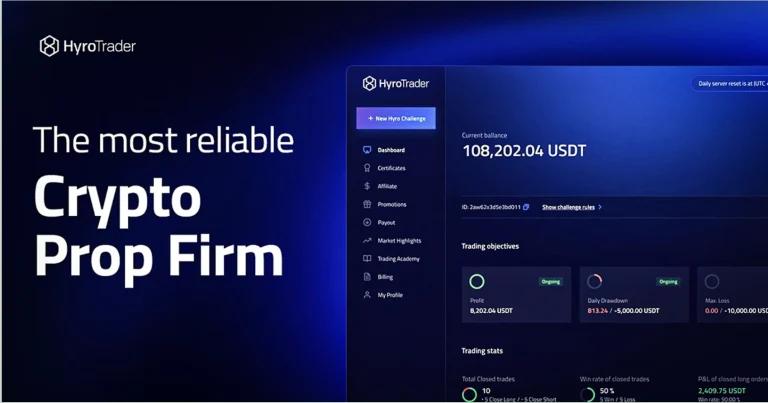The Future of Digital Payments in Cross-Border Transactions
In today’s increasingly interconnected global economy, businesses are continuously seeking faster, more cost-effective ways to conduct cross-border payments. Traditional remittance systems often present challenges—high fees, extended processing times, and currency volatility—that can hinder global commerce, particularly for small and medium-sized enterprises (SMEs). Emerging financial technologies like stablecoins are offering promising solutions that streamline international payments. […]

In today’s increasingly interconnected global economy, businesses are continuously seeking faster, more cost-effective ways to conduct cross-border payments. Traditional remittance systems often present challenges—high fees, extended processing times, and currency volatility—that can hinder global commerce, particularly for small and medium-sized enterprises (SMEs). Emerging financial technologies like stablecoins are offering promising solutions that streamline international payments.
The Problem with Traditional Cross-Border Payments
Existing international payment methods frequently rely on multiple intermediaries, resulting in high costs and delays. For example, transferring $200 could incur fees as high as $12–$20, according to the World Bank.
These systems also tend to process transactions over several business days, with fluctuating exchange rates further reducing the actual amount received. Such inefficiencies are especially burdensome for SMEs that often work with narrow profit margins.
What Are Stablecoins?
Stablecoins are a type of cryptocurrency pegged to the value of stable assets like fiat currencies (e.g., USD or EUR), aiming to offer price stability in the otherwise volatile crypto market. Popular examples include USDT (Tether), USDC (USD Coin), and BUSD (Binance USD).
There are three main types:
- Fiat-collateralized: Backed 1:1 by fiat currency held in reserve.
- Crypto-collateralized: Backed by other cryptocurrencies and often overcollateralized.
- Algorithmic: Use code-based mechanisms to balance supply and demand without direct collateral.
Stablecoins and the Cross-Border Payment Advantage
In 2023, stablecoin market capitalization surpassed $150 billion, and transaction volume surged, with stablecoins accounting for over 50% of crypto activity in Q4, per Chainalysis.
Stablecoins can be transferred quickly and cheaply across borders on blockchain networks such as Tron or Polygon, often in seconds and for a fraction of a cent. These advantages offer practical value to e-commerce platforms, SaaS companies, and global traders.
Their decentralized nature also means transactions occur outside of traditional systems like SWIFT, with 24/7 availability and improved transparency thanks to blockchain’s open-ledger architecture.
Infographic: Traditional Payments vs. Stablecoin Payments
| Feature | Traditional Banks | Stablecoins |
| Transaction Fees | 6% – 10% | <1% |
| Settlement Time | 3 – 7 days | <10 minutes |
| Exchange Rate Volatility | High | Low |
| Accessibility | Limited | Global (24/7) |
| Transparency | Low | High (on-chain) |
| Intermediaries Involved | Multiple | Minimal |
Case Study: How UniPayment Supports Cross-Border Transactions
UniPayment, a blockchain payment solution provider, offers tools that facilitate stablecoin-based transactions for entrepreneurs and businesses.
Its platform supports a multi-currency wallet for USDT and USDC, allowing conversion to over 26 fiat currencies, including USD and EUR. With built-in Smart Order Router technology, currency conversions can occur instantly—streamlining operations for businesses in international trade.
The platform also adheres to compliance protocols under licenses in Lithuania and Belgium, and uses security measures such as multi-party computation (MPC) and cold storage to protect user funds.
By reducing reliance on traditional banks, UniPayment enables underserved communities—including minority entrepreneurs and freelancers—to conduct cross-border transactions more easily and securely using only internet-enabled devices.
Industry Outlook: A Growing Market
- Cross-border payments are projected to exceed $250 trillion by 2027 (McKinsey).
- The stablecoin market grew over 200% between 2020 and 2023 (Statista).
- 70% of financial institutions surveyed by Deloitte plan to adopt blockchain-based payments within three years.
These indicators underscore the growing momentum behind digital currencies and stablecoins in particular as viable tools for global commerce.
Unlocking Financial Inclusion
Stablecoins are helping address the global financial inclusion gap, especially in developing regions. The World Economic Forum reports that 1.7 billion adults remain unbanked.
In places like Nigeria, stablecoins facilitated over $56 billion in cryptocurrency payments in 2023, mostly conducted via mobile wallets. This access enables independent workers and small business owners to participate in global markets, bypassing traditional banking barriers.
Final Thoughts: The Road Ahead
Stablecoins are proving to be more than a digital trend. They represent a shift toward more accessible, transparent, and cost-effective cross-border transactions.
While challenges remain around regulation and adoption, stablecoins offer a glimpse into a financial system that prioritizes efficiency and inclusivity. Platforms like UniPayment are contributing to this shift by offering secure, compliant, and scalable payment infrastructure for users worldwide.
Follow us on Google News
Get the latest crypto insights and updates.
Related Posts

Must-Read for Investors: Bitcoin Weakens, XRP Strengthens – Why XRPStaking is Becoming a New Choice for Global Users
Coinfomania News Room
Author

Navigating the Volatility: Best Crypto Prop Trading Firms
Coinfomania News Room
Author

Bety Crypto Casino Launches with Premium Games, Crypto Features, and Expansive Bonuses in 2025
Coinfomania News Room
Author